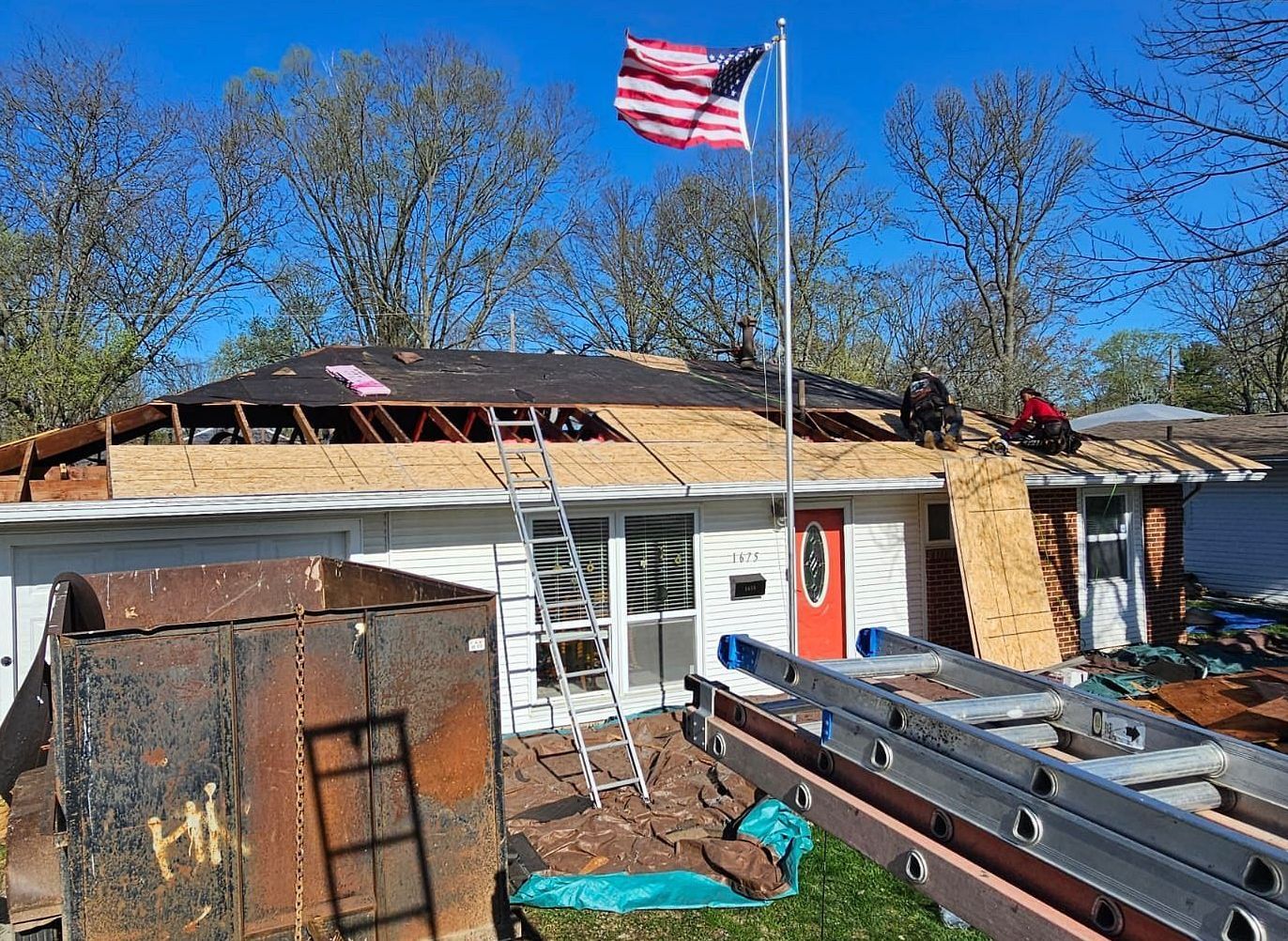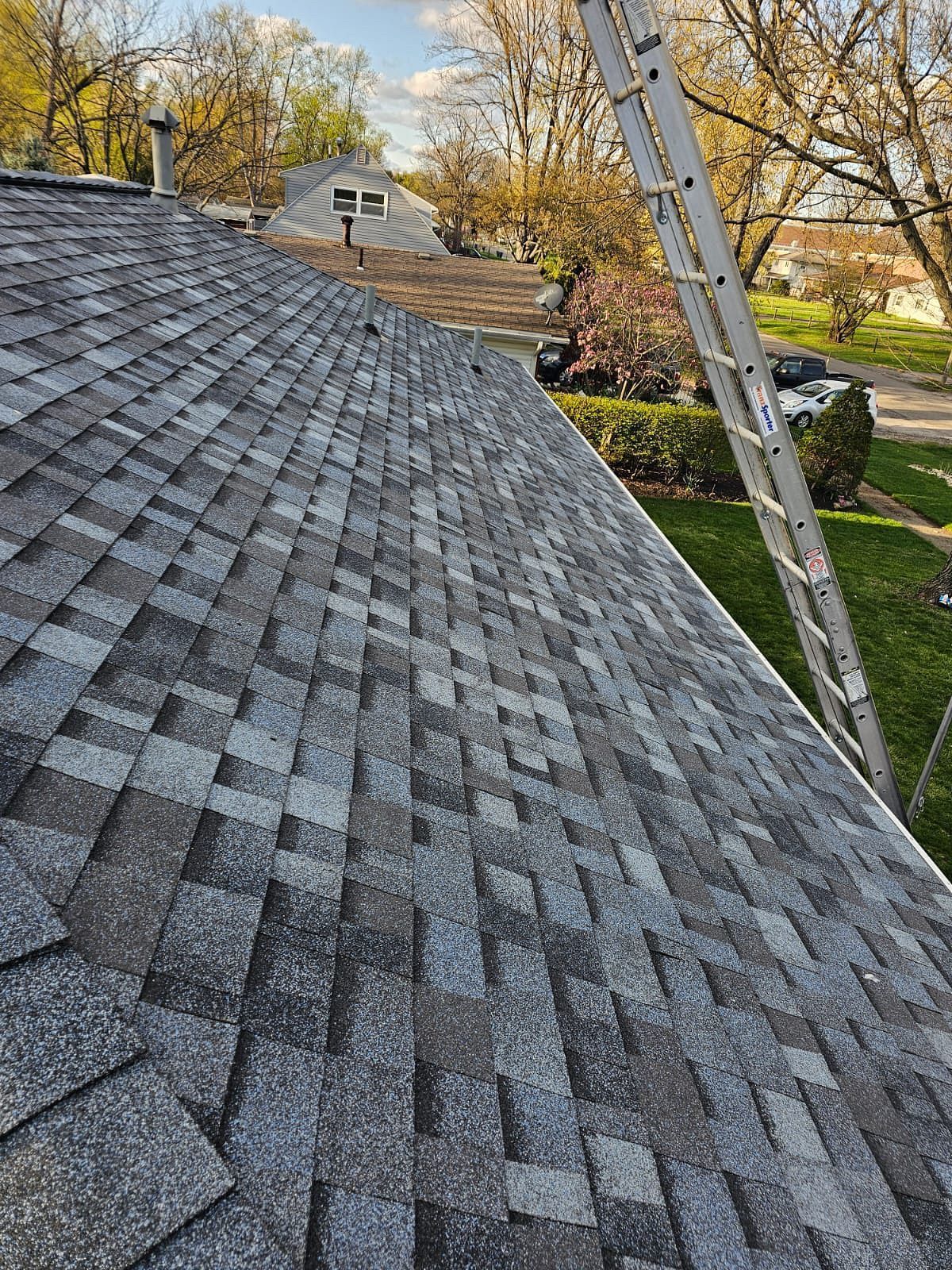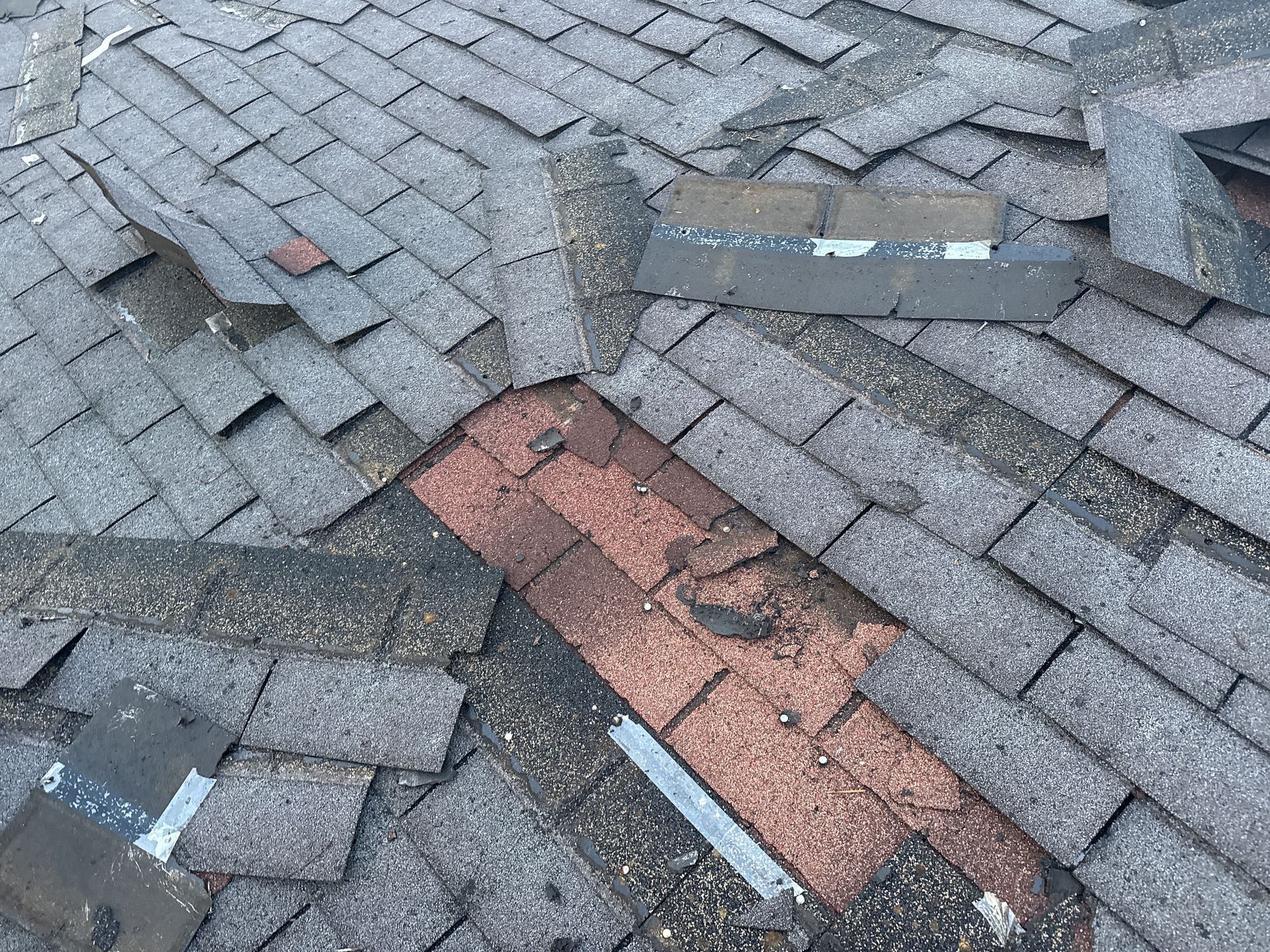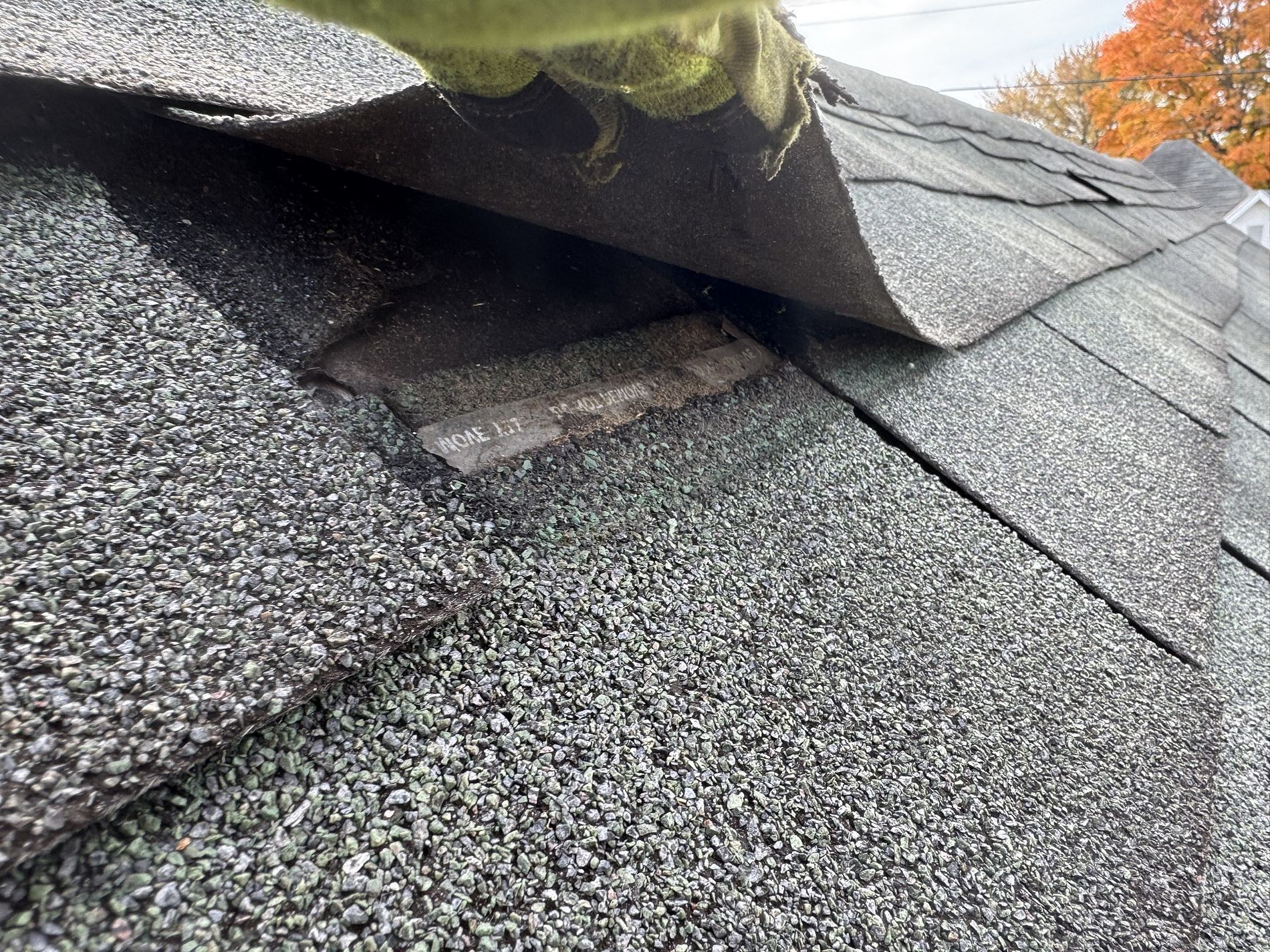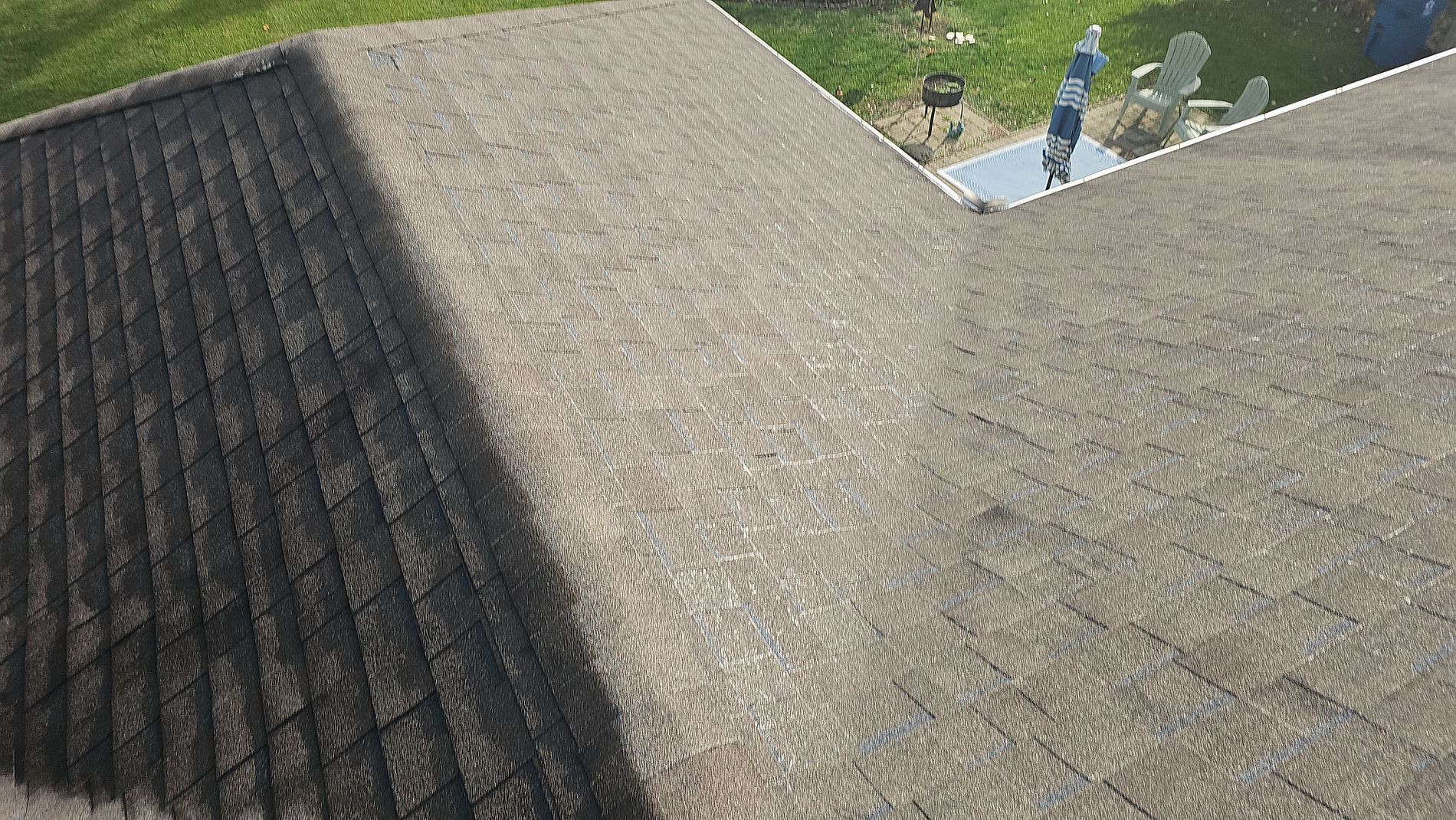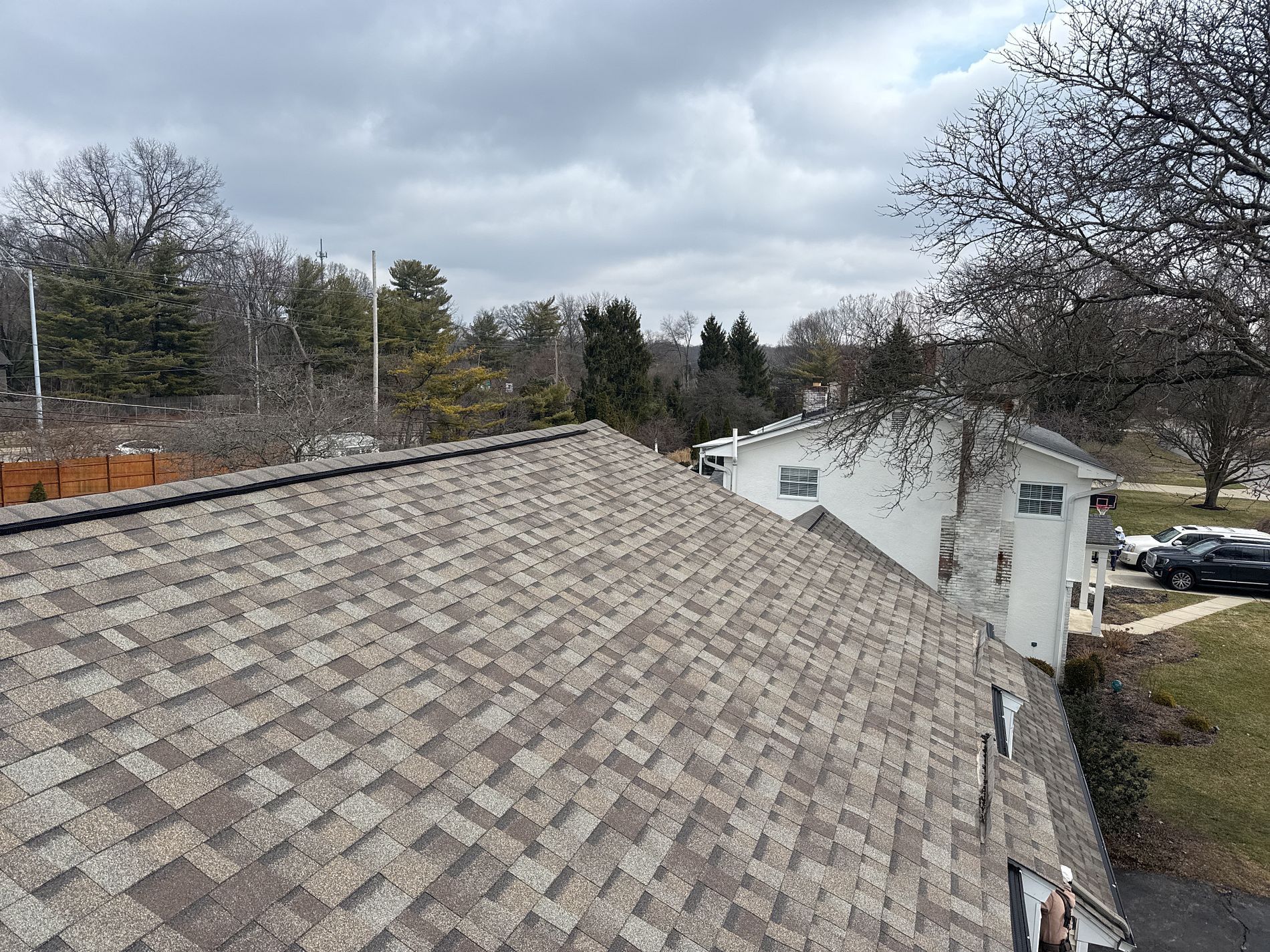Sustainable and Eco-Friendly Roofing
Sustainability is a significant focus in the roofing industry, with homeowners seeking environmentally friendly solutions. Green roofs, which incorporate vegetation, and cool roofs, designed to reflect heat, are gaining popularity in Columbus due to their energy efficiency and environmental benefits.
Benefits of Eco-Friendly Roofing:
Energy Efficiency:
These roofs help reduce energy consumption by keeping homes cooler in the summer.
Environmental Impact: They lower the carbon footprint of your home.
Durability: Eco-friendly materials often extend the lifespan of the roof.
Property Value: Sustainable features can enhance your home's value.
Popular Eco-Friendly Roofing Options:
Recycled Shingles: Made from repurposed materials, these shingles reduce waste and are available in various styles to match your home's aesthetic.
Cool Roofs: Designed to reflect more sunlight and absorb less heat, cool roofs help maintain comfortable indoor temperatures, reducing energy costs.
Green Roofs: Incorporating vegetation layers, green roofs improve air quality and provide natural insulation.
What is the future of eco-friendly roofing?
The future of roofing is shifting toward sustainable materials and innovative designs that maximize energy efficiency. With advancements in solar-integrated roofing and self-repairing materials, Columbus homeowners can expect more options that balance sustainability with cost-effectiveness.
Advanced Roofing Technology
Technological advancements are enhancing the functionality and longevity of roofs. Homeowners are now integrating smart features and innovative materials to improve performance.
Key Technological Innovations:
Solar Roofing: Solar shingles blend seamlessly with traditional roofing materials, allowing homeowners to generate electricity without compromising aesthetics.
Smart Roofs: Equipped with sensors, smart roofs can detect leaks, monitor weather conditions, and provide real-time data to homeowners, enabling proactive maintenance.
Energy-Efficient Insulation: Modern insulation materials enhance energy efficiency, keeping homes warmer in winter and cooler in summer.
What is the newest type of roofing?
One of the most cutting-edge innovations in construction materials is self-healing technology. These advanced surfaces use nanotechnology to repair minor cracks and leaks, significantly reducing maintenance costs. Additionally, solar-integrated designs are gaining traction, allowing homeowners to harness solar power without the need for traditional panels.
Metal Roofing Systems:
Metal roofing offers exceptional durability and a modern appearance, making it an attractive option for many homeowners.
Benefits of Metal Roofing:
Longevity: Metal roofs can last 50 years or more with proper maintenance.
Weather Resistance: They withstand extreme weather conditions, including heavy snow and high winds.
Energy Efficiency: Metal reflects solar radiant heat, reducing cooling costs.
What are the drawbacks of metal roofing?
While metal roofing is durable and energy-efficient, some homeowners are concerned about higher upfront costs and potential noise during rainstorms. However, modern insulation solutions have significantly minimized these issues.
Enhanced Aesthetic Customization
Homeowners are moving beyond traditional roofing colors and styles, opting for designs that reflect their personal taste and enhance curb appeal.
Current Aesthetic Trends:
Bold Colors: Shades like blue, red, and plum are becoming popular, offering a striking contrast to conventional neutrals.
Mixed Materials: Combining different textures and materials adds depth and uniqueness to roof designs.
Architectural Shingles: These provide a dimensional appearance, mimicking the look of natural materials like slate or wood.
What is the most popular roof style?
In Columbus, the gabled roof remains a top choice due to its ability to shed water and snow effectively. However, modern flat roofs with green roofing elements are gaining popularity, particularly in urban settings where energy efficiency is a priority.
Resilience Against Extreme Weather
With the increasing frequency of extreme weather events, there's a heightened focus on roofing materials that offer enhanced durability and weather resistance.
Features of Weather-Resistant Roofs:
Impact Resistance: Materials designed to withstand hail and debris impacts.
High Wind Resistance: Roofing systems engineered to endure strong winds common in severe storms.
Fire Resistance: Utilizing fire-resistant materials to protect homes in areas prone to wildfires.
What is the most durable type of roof?
Slate roofing is one of the most durable options, lasting up to 100 years. However, modern synthetic composite shingles offer a lightweight and cost-effective alternative with similar durability.
Energy-Efficient Roofing Solutions
Energy-efficient roofs are designed to minimize heat absorption, leading to lower cooling costs during hot Ohio summers.
Energy-Saving Roofing Materials:
Reflective Shingles: These shingles reflect more sunlight, keeping homes cooler.
Proper Ventilation Systems: Ensuring adequate roof ventilation prevents heat buildup, enhancing energy efficiency.
How can homeowners improve their roof’s energy efficiency?
Beyond choosing energy-efficient materials, homeowners can install radiant barriers, improve attic insulation, and maintain proper roof ventilation to maximize energy savings.
Professional Roofing Services
Roofing projects require expertise to ensure quality, safety, and compliance with local building codes.
Benefits of Hiring Professional Roofers:
Expertise: Professional contractors have the knowledge to recommend suitable materials and designs.
Quality Installation: Proper installation extends the lifespan of your roof and prevents future issues.
Warranty Protection: Many professionals offer warranties on both materials and workmanship.
How do you choose the right roofing contractor?
When selecting a roofing contractor, homeowners should check for licensing, read reviews, request multiple quotes, and ensure warranty coverage before making a decision.
Making the Right Choice for Your Roof
Staying abreast of the latest roofing trends empowers homeowners to make informed decisions that enhance their property's value, efficiency, and aesthetic appeal. Whether you're considering a roof replacement or exploring new designs, consulting with a professional roofing contractor can provide personalized solutions tailored to your needs.
Ready to Upgrade Your Roof?
If you're looking for high-quality roofing services in Columbus, Ohio, Allstate Exteriors has you covered. Our expert team specializes in residential and commercial roofing solutions tailored to your needs. Contact us today for a free consultation and let’s bring your roofing vision to life!
